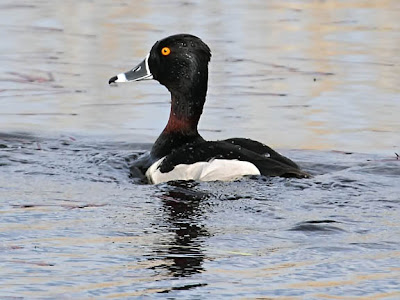
WHENEVER the days are cool and clear,
The sand-hill crane goes walking
Across the field by the flashing weir,
Slowly, solemnly stalking.
The little frogs in the tules hear,
And jump for their lives if he comes near;
The fishes scuttle away in fear
When the sand-hill crane goes walking.
The field folk know if he comes that way,
Slowly, solemnly stalking,
There is danger and death in the least delay,
When the sand-hill crane goes walking.
The chipmunks stop in the midst of play;
The gophers hide in their holes away;
And 'Hush, oh, hush!' the field-mice say,
When the sand-hill crane goes walking.

 The crested caracara, also sometimes called the northern caracara, is a raptor that lives primarily in Mexico, Central America, and northern portions of South America. The northern part of their range extends up into Texas, southern Arizona and parts of southern Florida. These birds where photographed on our trip to south Texas back in 2010.
The crested caracara, also sometimes called the northern caracara, is a raptor that lives primarily in Mexico, Central America, and northern portions of South America. The northern part of their range extends up into Texas, southern Arizona and parts of southern Florida. These birds where photographed on our trip to south Texas back in 2010. The crested caracara is a member of the Falcondae, or falcon, family, but they are very different then the rest of the falcons that we see here in North America. When we think of falcons we think of birds that are built for speed, many of which hunt other birds in flight. The crested caracara acts much more like a vulture. You are much more likely to see carcara soaring up in the sky in search of carrion then you are to see one chasing down prey. The reason why the two birds pictured above look differently is because the top photo is a mature adult caracara while the second photo is an immature bird.
The crested caracara is a member of the Falcondae, or falcon, family, but they are very different then the rest of the falcons that we see here in North America. When we think of falcons we think of birds that are built for speed, many of which hunt other birds in flight. The crested caracara acts much more like a vulture. You are much more likely to see carcara soaring up in the sky in search of carrion then you are to see one chasing down prey. The reason why the two birds pictured above look differently is because the top photo is a mature adult caracara while the second photo is an immature bird.















































